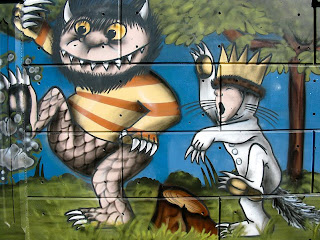A bit about what I'm interested in most, as a scientist
Visual instantiation is a cognitive process that generates visual and spatial properties.
Humans visually instantiate when reading, designing, planning, dreaming, problem solving, and creating physical art. The variety of inputs is great. The stimulus that triggers the instantiation could be verbal, for example when one is reading a description of a scene, or when someone asks you to picture something. The stimulus could be internally-generated, as it is when imagining what would happen if a bookshelf fell over. What makes all of these examples similar is that they all create visual and spatial properties.
Imagination is a related process. Broadly speaking, imagination is self-generated input for the perceptual system. It is not limited to the visual modality, as one can imagine how something might taste, and one can imagine the sound of Vincent Price's voice. In visual imagination, evidence suggests that the mind creates patterns of neural activation that is spatially organized in the visual cortex, in the same place as the pattern made during actual perception (Tootell, Silvermanm, Switkes, & Devalois, 1982). In computational terms, each neuron represents a `bit' in a spatially-orgainzed `bitmap.' Kosslyn (Kosslyn, 1994) refers to this kind of image as ``depictive.'' Depictive images represent only colors (including hue, saturation, brightness) at certain points. The generation of a bit-map, or depictive, image is called ``rendering.'' It means going from some structured representation to a bit-map. This structured representation is the `descriptive' image (Kosslyn, 1994). How one gets from a descriptive to a depictive image is something I'm interested in, but I'm even more interested in the generation of the descriptive image in the first place.
As such, I use the term ``visual instantiation,'' which deals with both the generation of the descriptive image and the depictive rendering.
REFERENCES
Kosslyn, S. (1994). Image and Brain. MIT Press.
Deoxyglucose analysis of retinotopic organization in primate striate cortex.
Science 26 Vol. 218. no. 4575, pp. 902 - 904

Comments